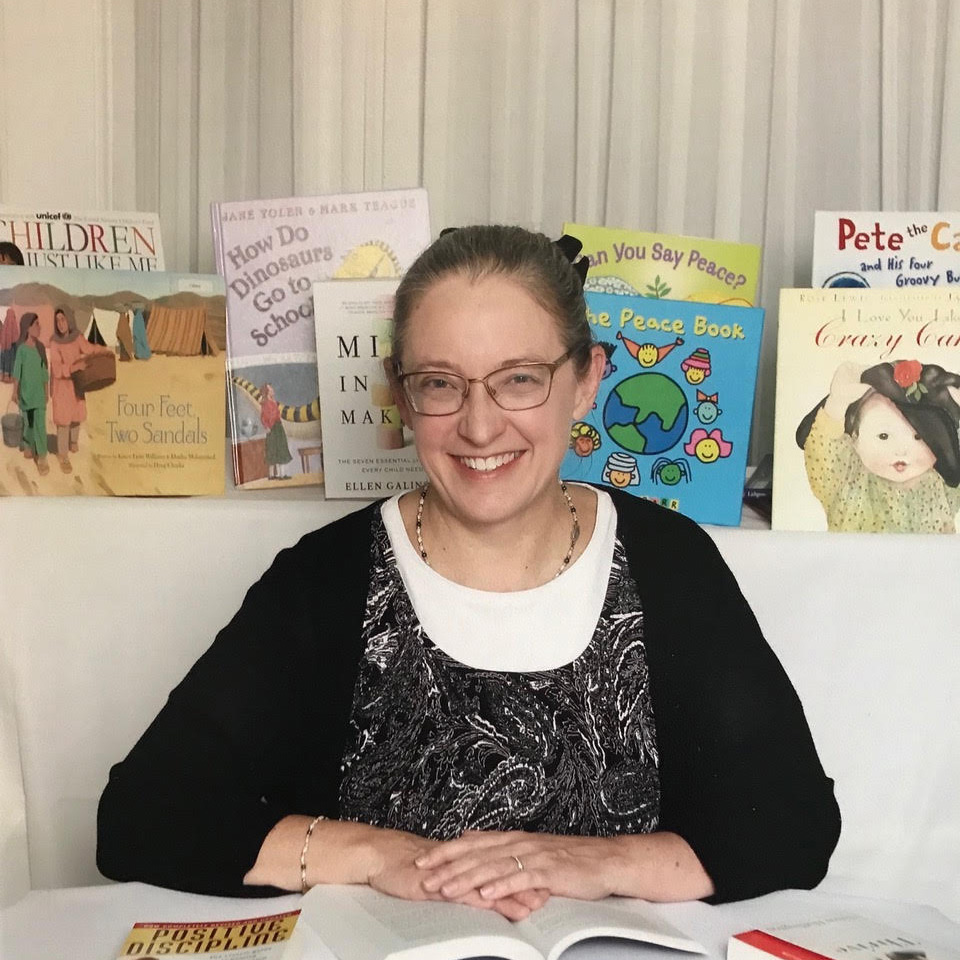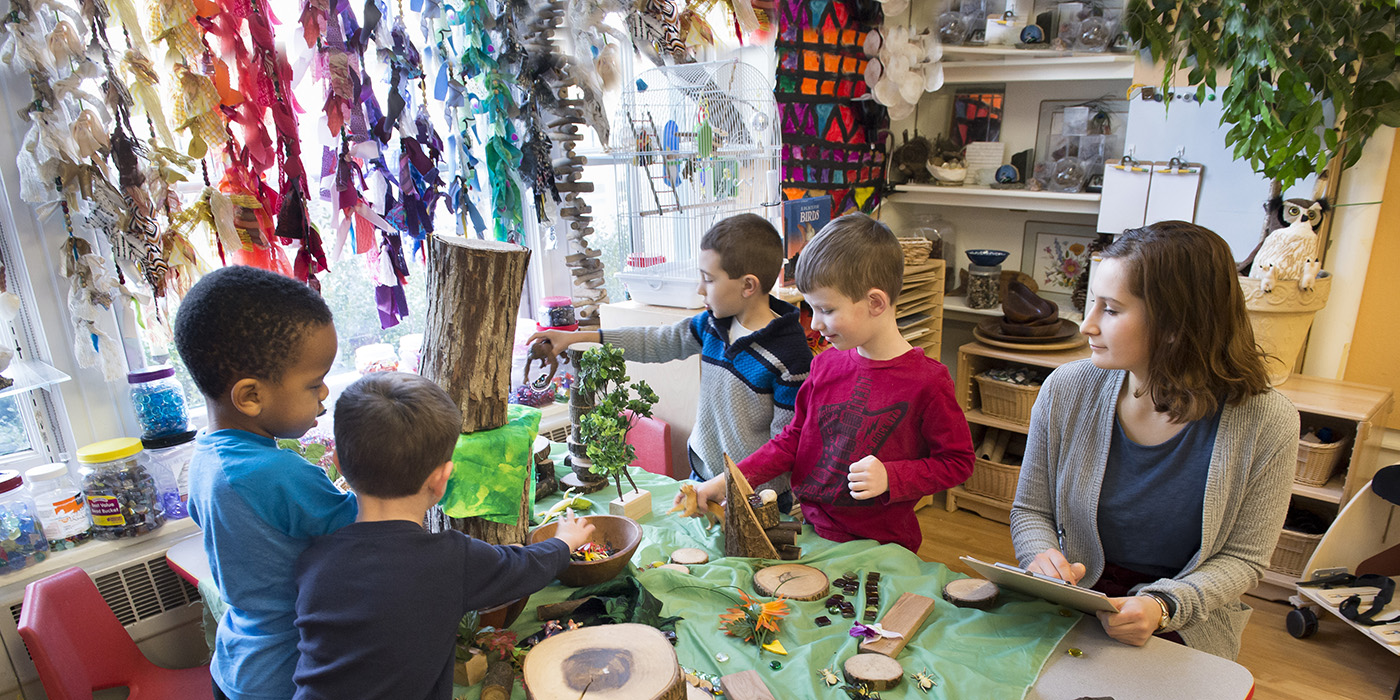The three-, four- and five-year-olds at the Children’s School at Carnegie Mellon University in Pittsburgh had a problem. They had blocks to move on the playground, but they didn’t have the wheelbarrows necessary to get the job done. So they got one of the teachers to help them write a note.
Dr. Sharon Carver, who has been running the Children’s School since 1993, did not just chuckle and tape the request to the refrigerator. “We ordered the stuff they asked for,” she says.

The wheelbarrows arrived, and there was another problem: they were not assembled.
In most places, staff might get out the tools and read the instructions for assembly while the children played, but that’s not how it works here. “They immediately understood that they were responsible for putting their own wheelbarrows together,” Dr. Carver says. “They couldn’t necessarily do it entirely themselves, but they did what they could and asked for help with the parts they couldn’t.”
Once the wheelbarrows were put together, the children encountered yet another obstacle. There were different levels on the playground, and the wheels of the wheelbarrows weren’t big enough to get up and down.
So they built ramps.
That’s just how they roll at the Children’s School. Guided by highly trained educators and supported by design choices, the play here is pragmatic. Carver, who admits that she gets bored easily, likes it when the children surprise her with new ideas and projects.
Demographically, the Children’s School is a mirror of Pittsburgh as a whole, with about 30% multilingual, the full range of income levels and 15% having special needs. The school arose in 1968, the same year as another Pittsburgh institution, the long-running TV show Mister Rogers’ Neighborhood. Like Fred Rogers, founder Ann Baldwin Taylor built upon the influence of John Dewey (1859-1952), who famously wrote, “Give the pupils something to do, not something to learn; and the doing is of such a nature as to demand thinking; learning naturally results.” Swiss psychologist Jean Piaget (1896-1980), who declared, “Play is the work of children,” was another inspiration.
According to Dr. Carver, Taylor and Rogers were part of a generation trying to understand and respect children for who they are and the way that they think. Everyone here makes mistakes, deals with it, asks for help and tries all over again.
Many of the lessons Dr. Carver uses from Rogers come from When You Wonder, You’re Learning: Mister Rogers’ Enduring Lessons for Raising Creative, Curious, Caring Kids by Gregg Behr and Ryan Rydzewski. The authors show how his principles have been proven effective by learning sciences research and in in varied contexts for learners of all ages.
Around the world, she notes, young children do things like tending livestock, chopping wood and washing clothes, but in many parts of America, they have none of these responsibilities, and as a result, play and learning fall into different, artificial categories, with work being something that awaits in the distant future.
Dr. Carver says, “When we give them the skills, they’re actually capable of doing a lot more than you’d think. What you should do when you’re four is going to depend on what you did when you were three.” Rogers, she notes, loved to show children how things are done and made. Famously, he took his young audience on tours of farms, factories and restaurants. Besides landscaping, children at the Children’s School get involved with activities like cooking and woodworking. The curriculum conforms to individual interest.
As a laboratory school—a model first developed by Dewey at the University of Chicago in 1896—the Children’s School has a second, equal responsibility to facilitate research into child development. Carnegie Mellon psychology, computer science, and robotics researchers and students, sometimes in conjunction with the Children’s Museum of Pittsburgh, observe the children and set up experiments and experiences. Dr. Carver refers to the school as a “sandbox” where undergraduates and graduates get to “mess around before going out into the world.”
👉 Read more: Campus Learning Laboratory
A recent project investigated how children interact with marble mazes. “These are computer science students,” says Dr. Carver. “Many know nothing about children.” In September, they observed the school, and they returned in November with their prototypes involving chutes and various gizmos for controlling the marbles. It was immediately apparent which projects engaged the children and which didn’t. “Children vote with their feet,” she says. “It’s pretty easy to tell if they’re engaged or not.” Students in a Music Entrepreneurship course collaborated with children with an interactive workshop inspired by an exhibition celebrating author and illustrator Mo Willems.
“We take the same approach with staff development as we do with the children,” she adds. When they experience the joy and power of such learning at their own level guided by their own interests, they are better able to design similar opportunities for the children. To that end, educators will soon take a trip to Pittsburgh’s InventionLand Education, an “immersive work environment” where new products are designed.
“We have no idea what’s going to happen,” enthuses Dr. Carver. “That’s what makes it play. Whatever we’re doing, all of us are approaching it playfully, within the structure of the activity.”
With the lines between work, play and learning permeable, the experience is always unpredictable, which is something the children, the educators and Dr. Carver herself appreciate.
Read more in the “Seasons of Play” series.
Part 1: A Day Trip to Philadelphia Shows What Playful Learning Is—and Isn’t
Part 2: Getting Messy in Madison: The 6 Sides of the Upcoming Play Make Learn 2023 Conference
Further Reading
John Dewey. “Activity and the Training of Thought,” Chapter 12 in How We Think (1910)
Jean Piaget. “Play, Dreams, and Imitation.” (1945)
Gregg Behr and Ryan Rydzewski, When You Wonder, You’re Learning: Mister Rogers Enduring Lessons for Raising Creative, Curious, Caring Kids. (2021; read our review)

Mark Swartz
Mark Swartz writes about efforts to improve early care and education as well as developments in the U.S. care economy. He lives in Maryland.



